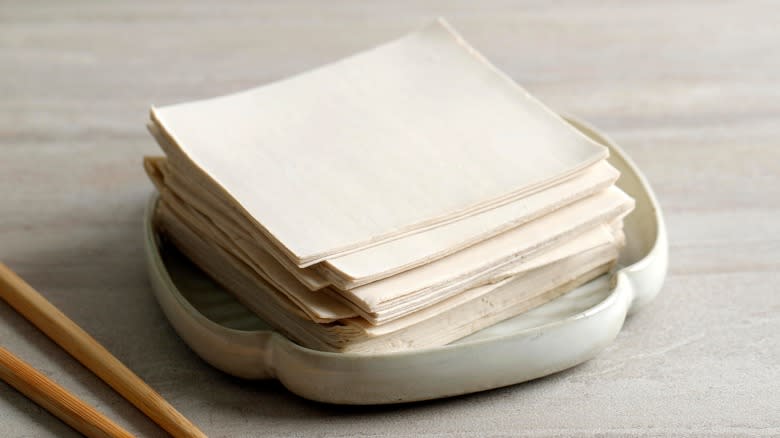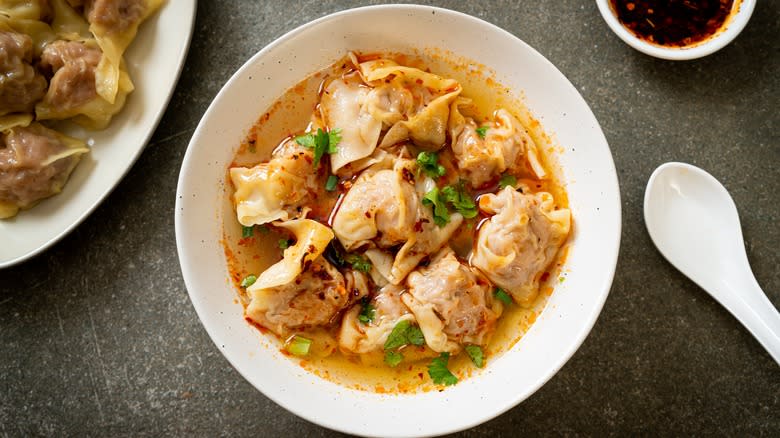How To Thaw Frozen Wonton Wrappers Without Drying Them Out

Nothing complicates the wonton-making process like dry and brittle wrappers. Given how delicate the dough can be, it's essential to handle the sheets properly. Often a race against time, fresh wrappers can fall victim to dehydration when left to rest for an extended period of time, but the risk of ruin is even higher when working with frozen wonton wrappers that have been incorrectly thawed. To avoid parched skins that are prone to splitting, thawing wonton wrappers the right way is a must.
Whether you're working with homemade or store-bought wrappers for your dumplings, any dough that's been frozen can be tricky to restore back to its original (read: soft and malleable) state. Rather than rush the process, resist the urge to defrost them in the microwave. Even if you work in quick intervals, microwaving will usually lead to tough and brittle wrappers. Instead, remove them from the freezer well in advance, letting the wonton wrappers thaw evenly in the fridge for about 12 hours. Alternatively, they can be defrosted within a few hours by submerging the package in cold water.
Once the wrappers have fully thawed, open the package only when they're ready to be used as any extended exposure to air can dry out edges. Additionally, it's worth covering the wonton wrappers with a slightly damp towel. Doing this helps restore and maintain moisture, preventing the dough from becoming parched, brittle, and borderline crumbly.
Read more: 21 Delicious Ways To Use Up Leftover Rice
How To Properly Freeze Extra Wonton Wrappers

The way in which wonton wrappers are frozen can seriously impact their quality once they're thawed. It's important to properly freeze the skins in the first place to avoid textural threats due to freezer burn, in which ice crystals form and can lead to dehydration. In order to minimize such risks, tightly wrap a stack of wonton sheets in plastic and then put them in an airtight container or resealable plastic bag for additional protection.
Although keeping a well-sealed package of wonton wrappers in the freezer is always a good idea, remember that they won't last forever. After about a year, even the best kept wrappers will experience changes in quality. That said, it's best to use them within a timely manner (say, in simple recipes like chili chicken wontons). Likewise, you might consider buying or making them in smaller quantities for quicker consumption.
As a final word of advice, thawed wonton wrappers that have become overly dry aren't always a lost cause. Salvaging brittle wrappers can be as simple as wetting their parched edges and letting them rest — just keep in mind that they might be chewy once cooked. Otherwise, crusty edges can be trimmed before using the wrappers to craft wontons. And if all else fails, try repurposing the skins. Simply fry them to make a crunchy topping for a stir-fry or Asian-inspired salad!
Read the original article on Tasting Table

 Yahoo Sports
Yahoo Sports 